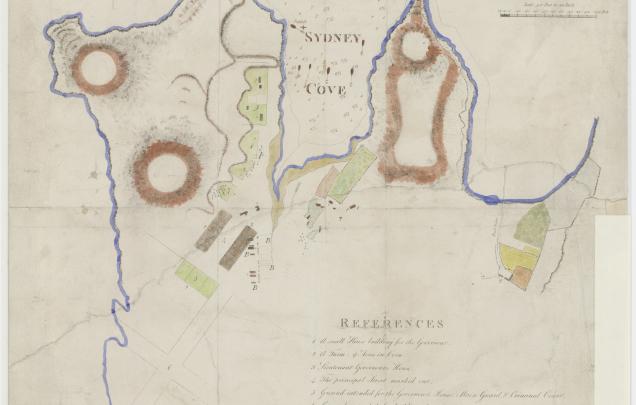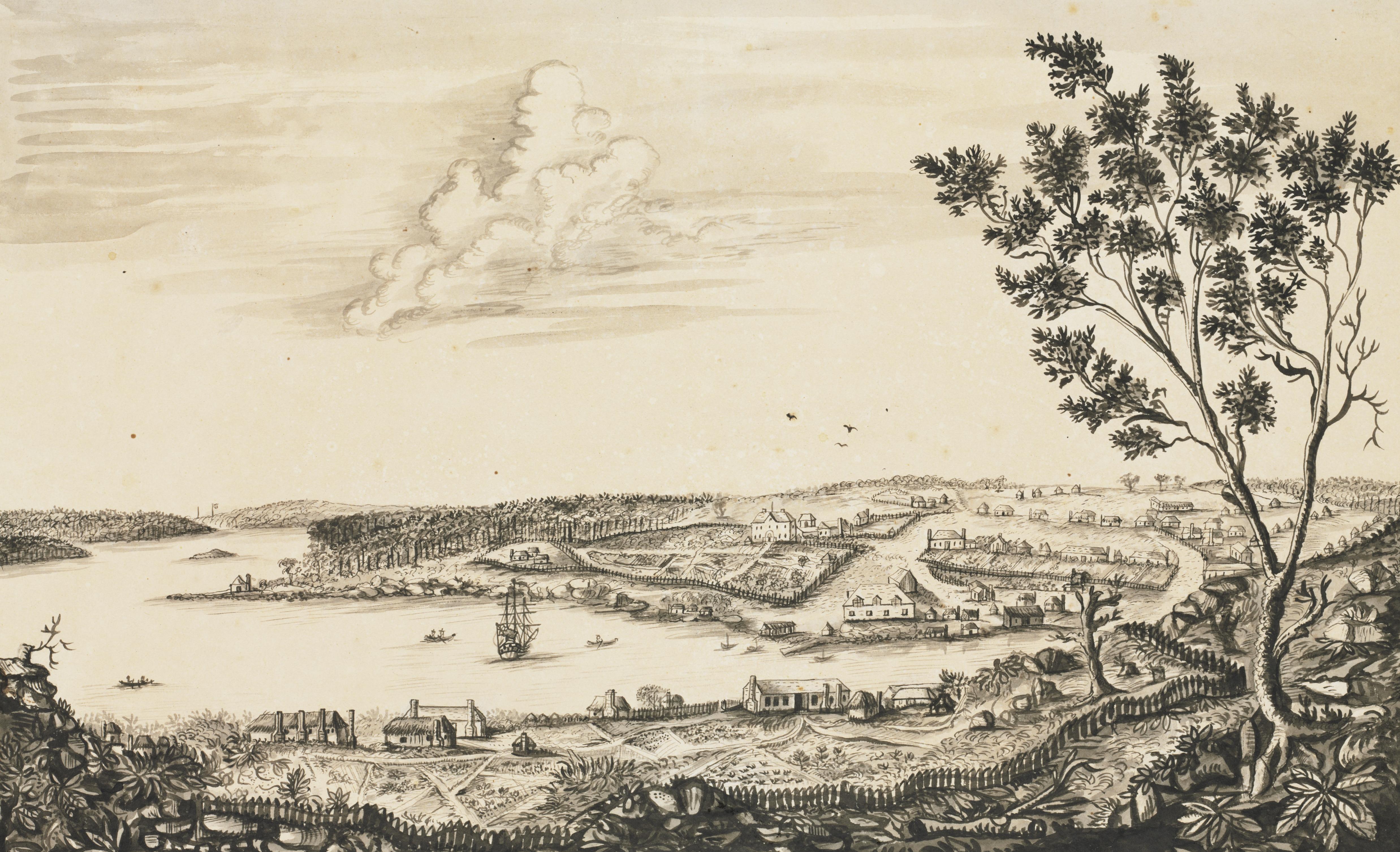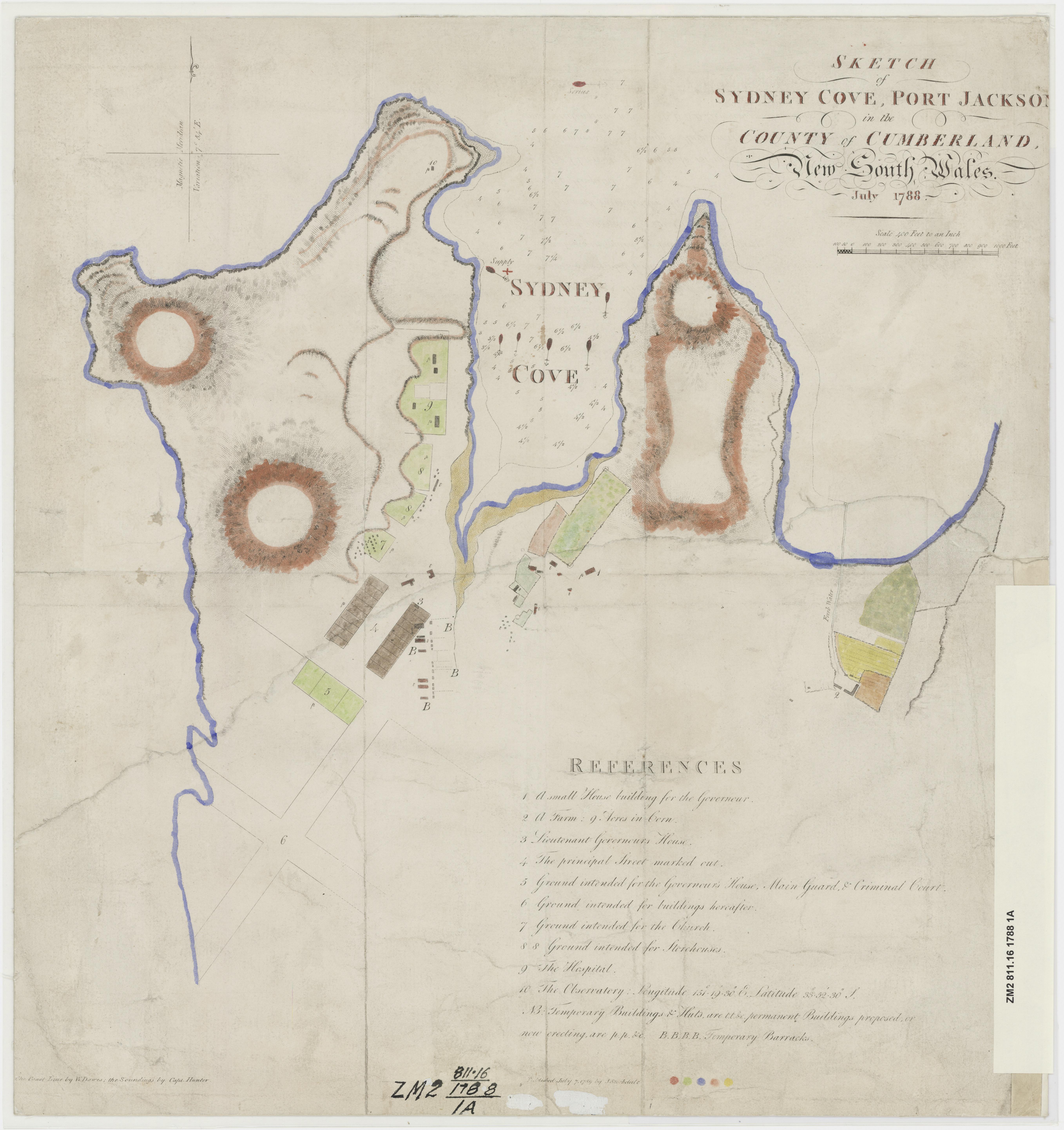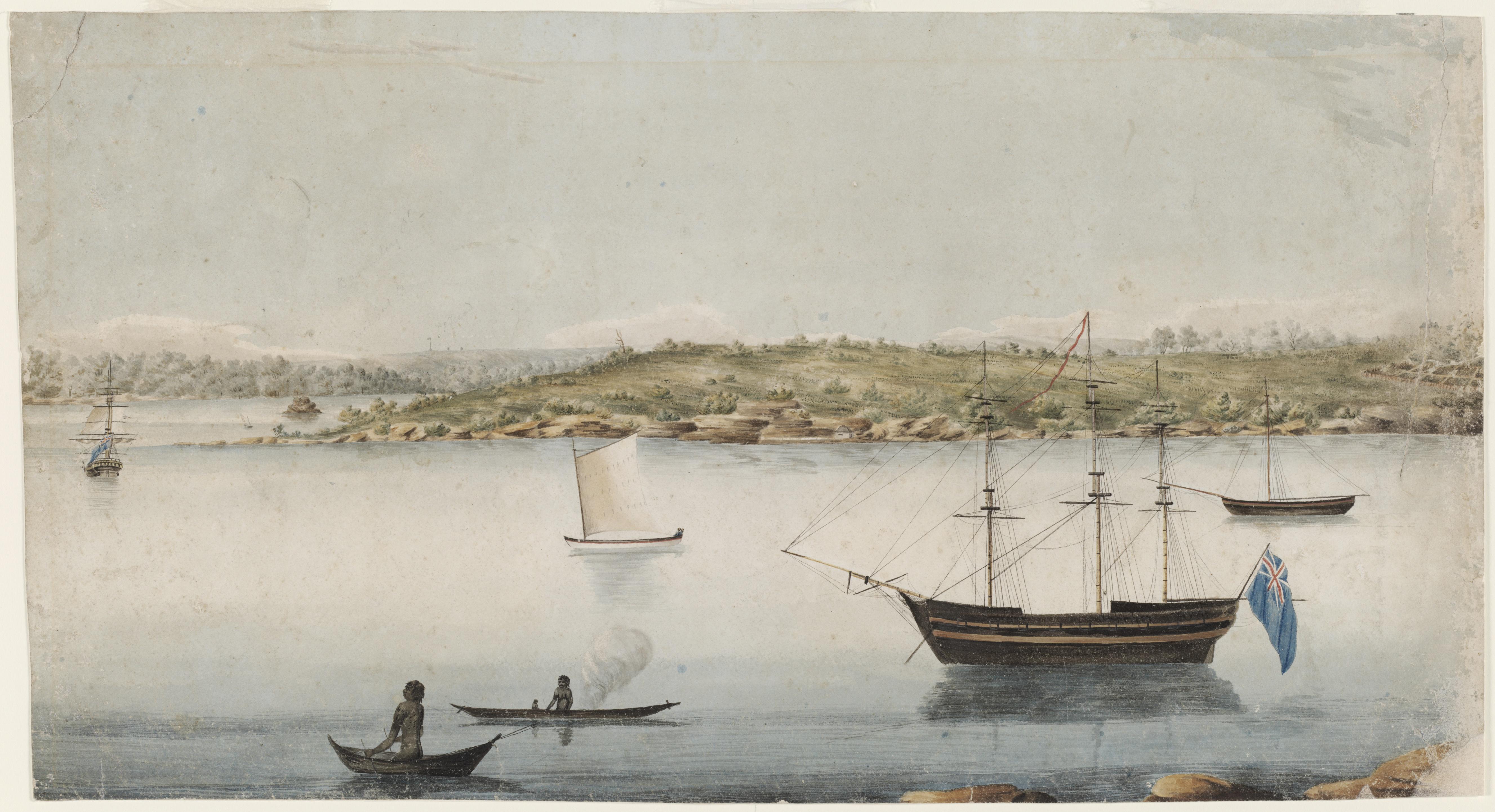Friendships with the locals
Students investigate the early relationships between colonists and Aboriginal people and are introduced to Patyegarang.

Friendships with the locals
In the beginning Governor Arthur Phillip’s intention was to establish friendly and peaceful relations with Aboriginal people. We have few records of the interaction between First Fleet convicts and Aboriginal people and there is limited evidence of friendly relationships. That doesn’t mean they did not exist! We can assume that there were some positive relationships as a few Aboriginal people were living (on and off) in the settlement.
Read Captain John Hunter’s record in 1790 that the Aboriginal people he knew were:
…being now become very familiar & intimate with every person in the Settlement, many of them now take up their rest every night in some of the Govt. houses. … We have frequently observd … that they often have a dance amongst themselves at Night on the lower point of Sydney Cove, where a small House had been built by the Gov.rs. order for their accommodation.
Bennelong stayed in the small House had been built for him (as mentioned above) or at the Governor’s house.
Look at this image of Bennelong’s hut on the left and the two storied Governor’s house on the right. This drawing was created in 1789.
Patyegarang was a young Gamaraigal woman who shared a friendship with the colony’s timekeeper and astronomer Lieutenant William Dawes, and would often visit him at his hut. The hut and observatory were built at what is now known as Tar-Ra/Dawes Point – where the southern pylons of the Sydney Harbour Bridge are today.
Find William Dawe’s hut on this map created in July 1788. Hint: Look up the Observatory in the References list. Now try to work out where Bennelong’s hut was on the map. It is not marked but was located on a point along from the Governor’s house. (Note: This map was created before Bennelong’s hut was built in 1789.)
Look at this image. It is very close to the view that Patyegarang would have seen looking from William Dawe’s hut when looking across to where Bennelong’s house would have been. This grassy headland is called Tubowgulle/Bennelong Point today and is the location of the Sydney Opera House.
Considering all three images, notice the geographic location of both of these huts. They are away from the main settlement on the water’s edge. Aboriginal people from around the district would meet at these two huts, along with the Governor’s house.
Answer these questions:
- Why did Aboriginal people meet at Patyegarang’s and Bennelong’s houses?
- Why do you think the location of these houses was important?
For the first year of European settlement there was a mutual fascination between Aboriginal people and the First Fleet Officers. There are records of attempts at friendly conversations, laughing, mimicry and the giving of gifts. Contact was fairly minimal. Two young orphaned Aboriginal children lived with British people, a girl Abaroo with Reverend Johnson and a boy Nanbarry with Surgeon John White in May 1789. Mostly, Aboriginal people did not become part of the settlement but were watching from the edges of it. After November 1790 Aboriginal people became very much part of the town. [Refer to Activity 1 Smallpox Outbreak & Activity 2 Abduction in Fighting Back learning activity for more information about what happened before November 1790 and for Nanbarry’s story.]
The initial relationships between convicts and Aboriginal people developed when the convicts went exploring or were hunting and gathering food in the bush. There are records of attacks and deaths of both Aboriginal people and convicts. Despite this, some friendly relationships developed. There are records of dancing and singing together. Some convicts learnt to speak the local Aboriginal language. There are convicts who were lured by the Aboriginal life, free from the rigid rules and relentless work of the settlement.
Patyegarang was about 15 years old when she first established contact with William Dawes and would visit his house. She became his teacher.
Research Patyegarang’s important legacy. [For assistance refer to Additional Information.]


